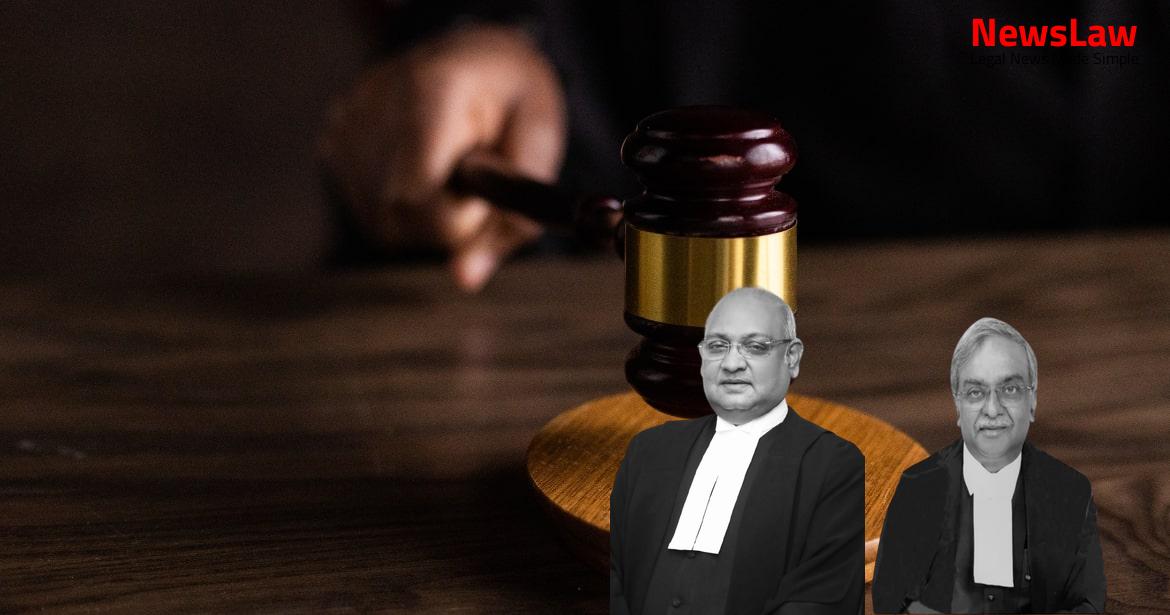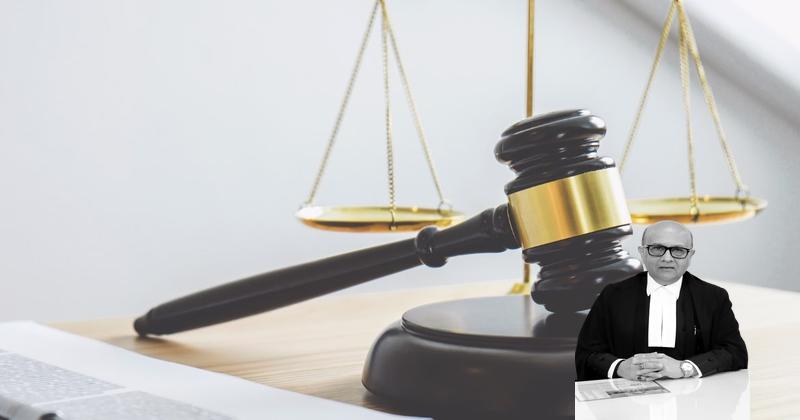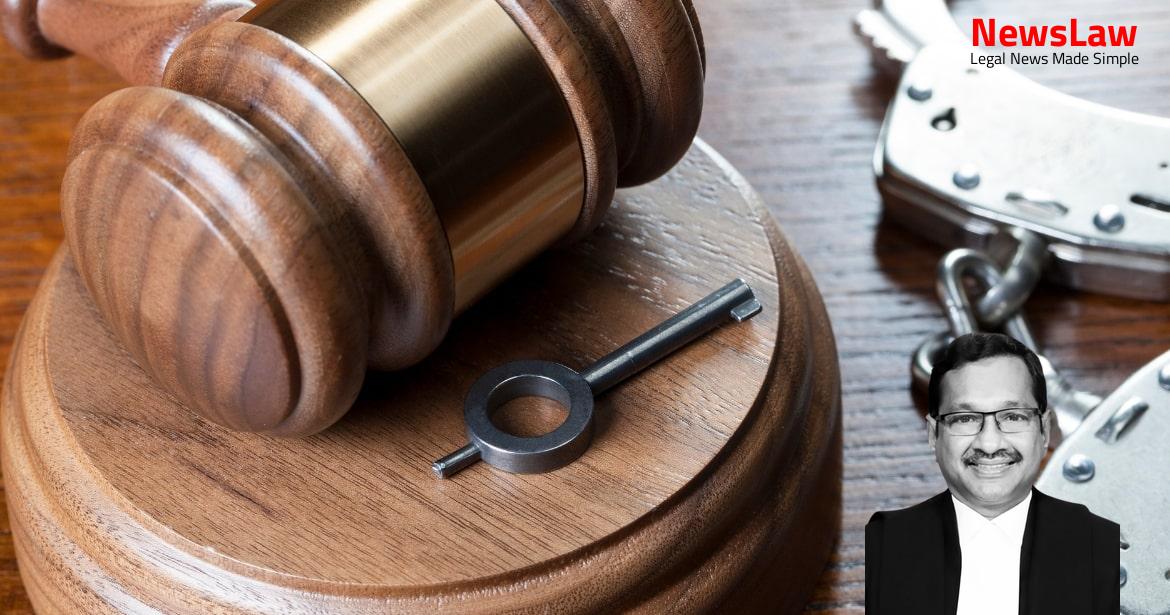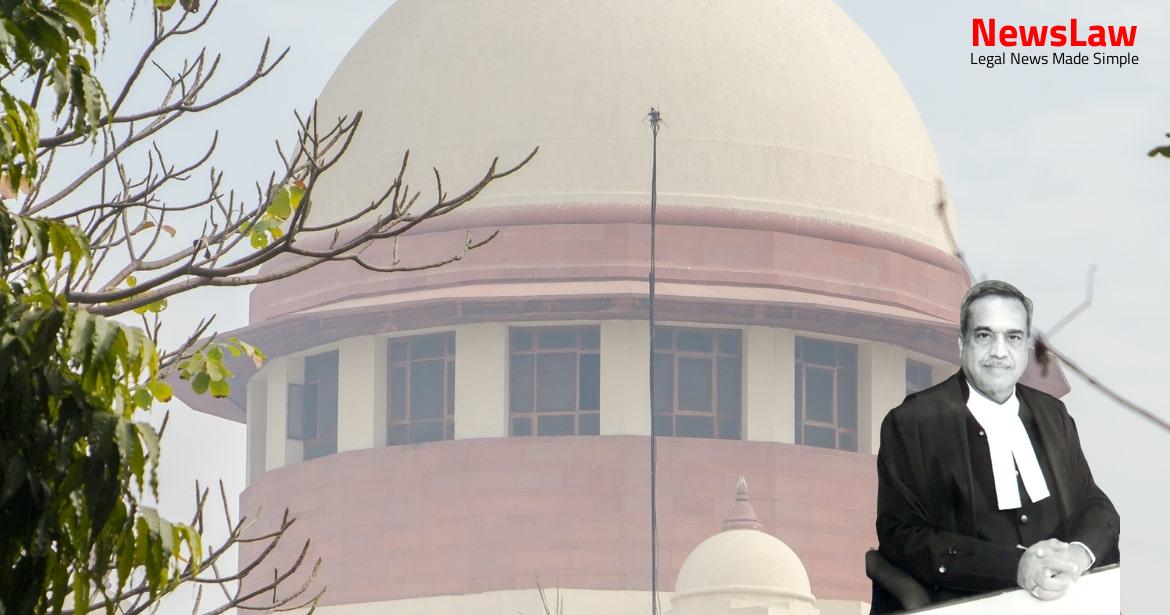The legal case delves into the intricate details of a court’s error in handling joint trials, specifically focusing on the analysis of evidence and its impact on the verdict. The violation of criminal jurisprudence principles and statutory provisions in the court’s decision-making process is under scrutiny. Follow along to understand the complexities of legal procedures in criminal cases involving multiple accused and the importance of meticulous legal analysis by the court.
Facts
- Trial Court acquitted all six accused in C.C. Nos. 2 of 2003 and 4 of 2004.
- No evidence was presented to prove that the accused were Customs House Agents involved in attempting to illegally export Sandal Wood to Singapore.
- It was established that the sandalwood had arrived at Tuticorin two months prior to the incident.
- Arrangements were made to export the sandalwood illegally.
- 476 cartons, plastic strips, packing materials, loose Mangalore tiles, marking stencil plates were seized before two witnesses and separate memos (Mahazars) were prepared.
- Seized material was transported to Customs Office.
- Customs Department preferred two appeals before the High Court as they were aggrieved by the acquittal.
- The sandalwood was not deposited in the Trial Court under section 95 CrPC, therefore not in the custody of the Trial Court.
- Accused did not have the intention to evade customs duty by wrong declaration.
- No documents to show accused forged documents under section 132 of Customs Act.
- It was not proved beyond reasonable doubt that accused attempted to export prohibited sandalwood with forged documents to evade customs duty.
- Separate complaint filed against the absconding accused K.M.A. Alexander.
- Assistant Commissioner filed a criminal complaint against five accused under sections 132, 132(1)(a)(ii), and 135A of the Customs Act.
- Keychain seized during the search of Mr. Nathan.
- Value of sandalwood and Mangalore tiles seized mentioned.
- Prosecution examined seven witnesses and filed 13 documents which were proved.
- Raid conducted by the Anti-Smuggling Wing of the Customs department based on specific information.
Also Read: Dismissal of Contempt Petition: Legal Analysis
Arguments
- The High Court recorded a conviction without considering the evidence in one of the cases, leading to a serious error of law.
- This action violates principles of criminal jurisprudence and statutory provisions in the Code of Criminal Procedure and the Indian Evidence Act.
- The High Court passed a single judgment for two separate trials but considered evidence from only one case to convict all accused, without specifying which case’s evidence was considered.
- Mr. Nagamuthu highlighted the legal error by referencing relevant judgments.
- The case question revolved around the conviction of the appellant despite Ramhans’ acquittal, which was not appealed.
- Reference was made to prior court judgments to determine the legal implications of a verdict of acquittal.
- The appellant’s case and Ramhans’s case needed separate consideration based on the evidence presented in each trial.
- Mr. Nagamuthu reserved further arguments on the merit of the case if the legal grounds were not successful.
- The error in the High Court’s handling of evidence necessitates remand to the High Court.
- Both trials had the same evidence presented, and using it to decide both appeals indicated a legal error by the High Court.
- The prosecution presented seven witnesses and 13 documents in each trial, with different sequencing and exhibit numbers in the second trial.
- The specific sequence of witnesses and exhibit numbers in both trials were compared through a chart.
- Mr. Nagamuthu presented a purely legal argument on behalf of the appellants.
- Mr. Misra for the appellant did not rely on Pritam Singh’s case in this Court.
- The appellants cannot claim any benefit on technicalities as they failed to show prejudice from the procedure adopted by the High Court.
- Mr. Banerjee, for the Customs Department, acknowledged that evidence from only one case was considered for both appeals.
- No serious error was alleged as the evidence in both cases was identical.
- Cases cited in support of this submission were Doat Ali and Ors. vs Mahammad Sayadali and Anr. and Pedda Venkatapathi and Ors. vs State 16.
- Witnesses and documents in both cases were the same, but the sequence of examination and proof differed.
- The High Court did not discuss the evidence of both cases separately, which was a point of contention.
- The appellant’s counsel argued that the evidence should have been independently dealt with in both trials, even if a common judgment was passed.
Also Read: Legal Analysis on Alleged Multiple Agreements in Property Sale Case
Analysis
- Section 137 of the Evidence Act deals with examination-in-chief, cross-examination, and re-examination.
- In cases involving two separate trials for the same offense but against different accused, judgments from one case can influence a decision in another case.
- The prosecution must establish pre-conditions for the admissibility of witness statements under Section 299 of the Cr.P.C.
- The right of an accused to observe prosecution witnesses is essential for a fair trial.
- The evidence recorded in one criminal trial is confined to the accused in that trial and cannot be used against co-accused in a separate trial.
- Fair trial principles necessitate evidence to be recorded in presence of accused and cross-examination to be allowed.
- The High Court’s judgment relying on evidence from one trial for two sets of accused undergoing separate trials was erroneous.
- Provisions under Cr.P.C. and Evidence Act outline conditions for exceptions where evidence from one trial can be considered in another.
- Maintaining judicial decorum and following statutory provisions is crucial in criminal trials involving multiple accused.
- Joint trials with different sets of accused can lead to complications and conflicts, detracting from the principles of fair trial and cross-examination.
- Section 33 of the Evidence Act provides for the relevancy of certain evidence for proving the truth of facts stated therein in any subsequent proceeding.
- Sections 205 and 299 of the Cr.P.C. address the dispensation of the personal attendance of the accused and the recording of evidence in the absence of the accused under certain circumstances.
- The Evidence Act also includes provisions such as sections 30, 276, 278, and 279, which outline the requirements for the consideration of confessed statements, the recording of evidence in various trial scenarios, and the interpretation of evidence to the accused.
- The case of Raja @ Ayyappan vs. State of Tamil Nadu dealt with the admissibility of confession of a co-accused in a separate trial due to the unavailability of a joint trial.
- Proper application of mind by the court and analysis of evidence are essential for reliance on the evidence presented.
- The requirement of a joint trial for the admissibility of confessions is stipulated under section 30 of the Evidence Act.
- The Cr.P.C. provisions, such as sections 273, 275, 276, 278, and 279, emphasize the recording and interpretation of evidence in the presence of the accused or their pleader.
- In cases where the accused is absent, the court may take evidence in their absence under specific circumstances as mentioned in the Cr.P.C.
- Confession of co-accused is admissible in trial of a co-accused for offense committed and tried in the same case together.
- If a joint trial is not held, the confession of a co-accused cannot be admissible in evidence against another accused facing trial at a later point in the same case.
- Absconding accused may have separate trials, and evidence from one trial may not be admissible in another trial involving different accused.
- Strict interpretation of Section 299 of the Code is necessary, and scrupulous compliance is imperative.
- High Court must consider the facts of each case individually and decide appeals accordingly.
- In cases where co-accused are absconding, issues regarding the admissibility of evidence and guilt of the accused need to be carefully evaluated.
- A judgment of the Andhra Pradesh High Court was set aside by a learned single Judge.
- The Judge directed for a re-hearing of two appeals.
- The judgment in the case of State of Kerala and Others vs Joseph Alias Baby and Others was relied upon.
- The matters need to be sent back to the High Court for a fundamental reason.
- Allowing one appeal may leave nothing for the High Court to decide.
- Severance of the judgment is not possible, especially in a criminal case where the rights of the accused and victim are equally important.
- The learned single Judge of the High Court did not follow the correct procedure, necessitating setting aside the High Court’s judgment.
- Once a common judgment is set aside for one appeal, it cannot be upheld for another appeal.
Also Read: Legal Analysis: Excise Duty Imposition and Negligence in Fire Incident
Decision
- The appeals have been allowed.
- The case has been remanded to the High Court for a fresh decision.
- The High Court judgment of 19.10.2019 has been set aside.
- All questions of law and fact remain open for discussion before the High Court.
- Parties are free to address the High Court on all issues.
- The appeals will be heard by the High Court afresh.
- The High Court is instructed to make a decision in accordance with law.
Case Title: A. T. MYDEEN Vs. THE ASSISTANT COMMISSIONER CUSTOMS DEPARTMENT (2021 INSC 697)
Case Number: Crl.A. No.-001306-001306 / 2021



